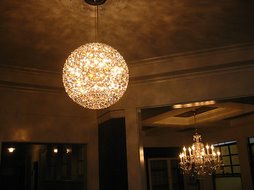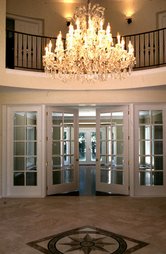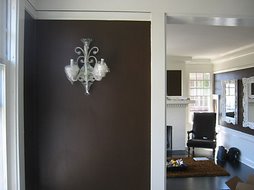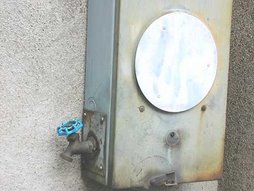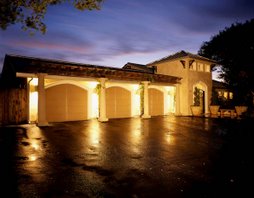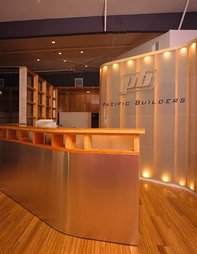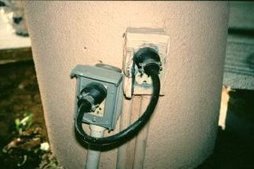The Risks and Hazards of Aluminum Electrical Wiring Explained
Aluminum wiring, used in some homes from the mid 1960's to the early 1970's, is a potential fire hazard. How safe is aluminum wiring? According to the U.S. Consumer Product Safety Commission, fires and even deaths have been reported to have been caused by this hazard. Problems due to expansion, or more likely micro-fretting and arcing at the connectors, can cause overheating at connections between the wire and devices (switches and outlets) or at splices. The connections can become hot enough to start a fire without ever tripping a circuit breaker!
CPSC research shows that "homes wired with aluminum wire manufactured before 1972 are 55 times more likely to have one or more connections reach "Fire Hazard Conditions" than are homes wired with copper. "Post 1972" aluminum wire is also a concern. Introduction of the aluminum wire "alloys" in 1972 time frame did not solve most of the connection failure problems. Aluminum wiring is still permitted and used for certain applications, including residential service entrance wiring and single-purpose higher amperage circuits such as 240V air conditioning or electric range circuits. The fire risk from single purpose circuits is much less than for branch circuits. But it's not necessarily because of a "new alloy" as some folks assert. It's because there are enormously fewer connections (four or six rather than 30 or 40 per circuit) and thus statistically a smaller chance of a connection failure. These connections do still burn up, as indicated by field reports.
HOW TO REDUCE THE RISK
of Fire and Electrical Circuit Connector Overheating in Buildings with Aluminum Electrical Wiring
Immediate Actions for Safety
- See if you have aluminum (solid conductor branch circuit) wiring installed in your home. Aluminum wiring identification tips are provided below.
- If there are signs of wiring failure, such as flickering lights, turn off the circuit involved and call a licensed electrician. See U.S. CPSC 516 (linked-to below) for other trouble signs.
- Install smoke detectors.
Repair the aluminum wiring: once the initial steps above have been addressed.
- Re-wire the Building replacing all aluminum branch circuit wiring with copper, as a "best repair method" for aluminum wiring, OR as a next-best aluminum wiring repair method,
-
 COPALUM: Use the special AMP (now TYCO) COPALUM connector and special tool to connect short copper wires to every aluminum wire end in the Building, reconnecting the copper to the various devices (outlets, switches, lights) and splices. This "copper pigtailing" procedure is performed by an electrician trained and licensed by AMP or TYCO to use this COPALUM procedure.
The TYCO COPALUM connector method is described in detail below. Typically this approach costs about half that of completely re-wiring a home with copper.
COPALUM Aluminum Wire Connector Availability discusses how to get the proper aluminum wire connectors
COPALUM: Use the special AMP (now TYCO) COPALUM connector and special tool to connect short copper wires to every aluminum wire end in the Building, reconnecting the copper to the various devices (outlets, switches, lights) and splices. This "copper pigtailing" procedure is performed by an electrician trained and licensed by AMP or TYCO to use this COPALUM procedure.
The TYCO COPALUM connector method is described in detail below. Typically this approach costs about half that of completely re-wiring a home with copper.
COPALUM Aluminum Wire Connector Availability discusses how to get the proper aluminum wire connectors
Currently only the two remedies above have been formally recommended by the CPSC. Emergency
temporary repairs necessary to keep an essential circuit in service might be possible following other procedures described by the CPSC or by industry experts.
-
 Scotchlok 3M Special Method: [Independently tested as reliable, not UL-listed for this application, described in article available here] For locations where the CPSC-recommended AMP/TYCO COPALUM aluminum wiring repair method is not available, an alternative, "Scotchlok 3M connector" special installation method is described in an article linked-to below.
Scotchlok 3M Special Method: [Independently tested as reliable, not UL-listed for this application, described in article available here] For locations where the CPSC-recommended AMP/TYCO COPALUM aluminum wiring repair method is not available, an alternative, "Scotchlok 3M connector" special installation method is described in an article linked-to below.
-
 AlumiConn aluminum to copper lug connectors [Recent product, U.L. Listed, undergoing independent testing] available from King Innovation. This UL-listed connector has not been recommended, nor recommended against, by the US CPSC, and is currently undergoing independent testing. Results will be reported here ASAP. (100 connectors cost $285. Lower prices for larger quantities.)
AlumiConn aluminum to copper lug connectors [Recent product, U.L. Listed, undergoing independent testing] available from King Innovation. This UL-listed connector has not been recommended, nor recommended against, by the US CPSC, and is currently undergoing independent testing. Results will be reported here ASAP. (100 connectors cost $285. Lower prices for larger quantities.)
Technical note on binding and poor wire connections in aluminum terminal blocks: In larger-sized electrical wire connector applications such as electrical panel buses (not this product), we have seen aluminum-block connection failures occur when the steel screw bound in the aluminum block, appearing to be a tight connection before proper contact with the wire has been made. King informs us that they have addressed this concern by plating the screws in nickel and plating the lug block in tin, thus eliminating the galling found in other lugs. Also there is a very small gap at the back of the wire terminal block where the installer can see the wire (coated in sealant) coming through. This provides visual confirmation that the wires came all the way through. Finally, King always recommends that installers to check the connection security by giving a quick tug on the wires to make sure they are tight.
-
 Other methods - not recommended: Warnings regarding other "repair" methods which are not recommended are discussed below, such as the Ideal 65 purple "Twister" connector shown in the photo at left (12 connectors cost $49. to $79.), receptacles and outlets marked "COALR" (even if these worked, which has not been demonstrated, what about all of the other electrical connections and splices in the building?) and others.
Other methods - not recommended: Warnings regarding other "repair" methods which are not recommended are discussed below, such as the Ideal 65 purple "Twister" connector shown in the photo at left (12 connectors cost $49. to $79.), receptacles and outlets marked "COALR" (even if these worked, which has not been demonstrated, what about all of the other electrical connections and splices in the building?) and others.
Aluminum Wiring Repair Method Details including step by step instructions for recognizing and repairing aluminum electrical wiring hazards are provided below.
Address other high-risk safety concerns: trip/fall hazards, smoking, seat belts, etc.
WANTED: Aluminum Wiring Failure Cases and Data for ongoing study on frequency and severity of occurrence of problems. If you have experienced any problem, or symptom of possible problem with aluminum electrical wiring, or have repaired or replaced it, please contact Daniel Friedman. All information is confidential. Study results will be provided to the U.S. Consumer Product Safety Commission and to the electrical industry. Real life aluminum wiring field failure reports can be seen at inspectapedia.
COPALUM: Use the special AMP (now TYCO) COPALUM connector and special tool to connect short copper wires to every aluminum wire end in the Building, reconnecting the copper to the various devices (outlets, switches, lights) and splices. This "copper pigtailing" procedure is performed by an electrician trained and licensed by AMP or TYCO to use this COPALUM procedure. The TYCO COPALUM connector method is described in detail below. Typically this approach costs about half that of completely re-wiring a home with copper. COPALUM Aluminum Wire Connector Availability discusses how to get the proper aluminum wire connectors
Scotchlok 3M Special Method: [Independently tested as reliable, not UL-listed for this application, described in article available here] For locations where the CPSC-recommended AMP/TYCO COPALUM aluminum wiring repair method is not available, an alternative, "Scotchlok 3M connector" special installation method is described in an article linked-to below.
AlumiConn aluminum to copper lug connectors [Recent product, U.L. Listed, undergoing independent testing] available from King Innovation. This UL-listed connector has not been recommended, nor recommended against, by the US CPSC, and is currently undergoing independent testing. Results will be reported here ASAP. (100 connectors cost $285. Lower prices for larger quantities.)
Other methods - not recommended: Warnings regarding other "repair" methods which are not recommended are discussed below, such as the Ideal 65 purple "Twister" connector shown in the photo at left (12 connectors cost $49. to $79.), receptacles and outlets marked "COALR" (even if these worked, which has not been demonstrated, what about all of the other electrical connections and splices in the building?) and others.
